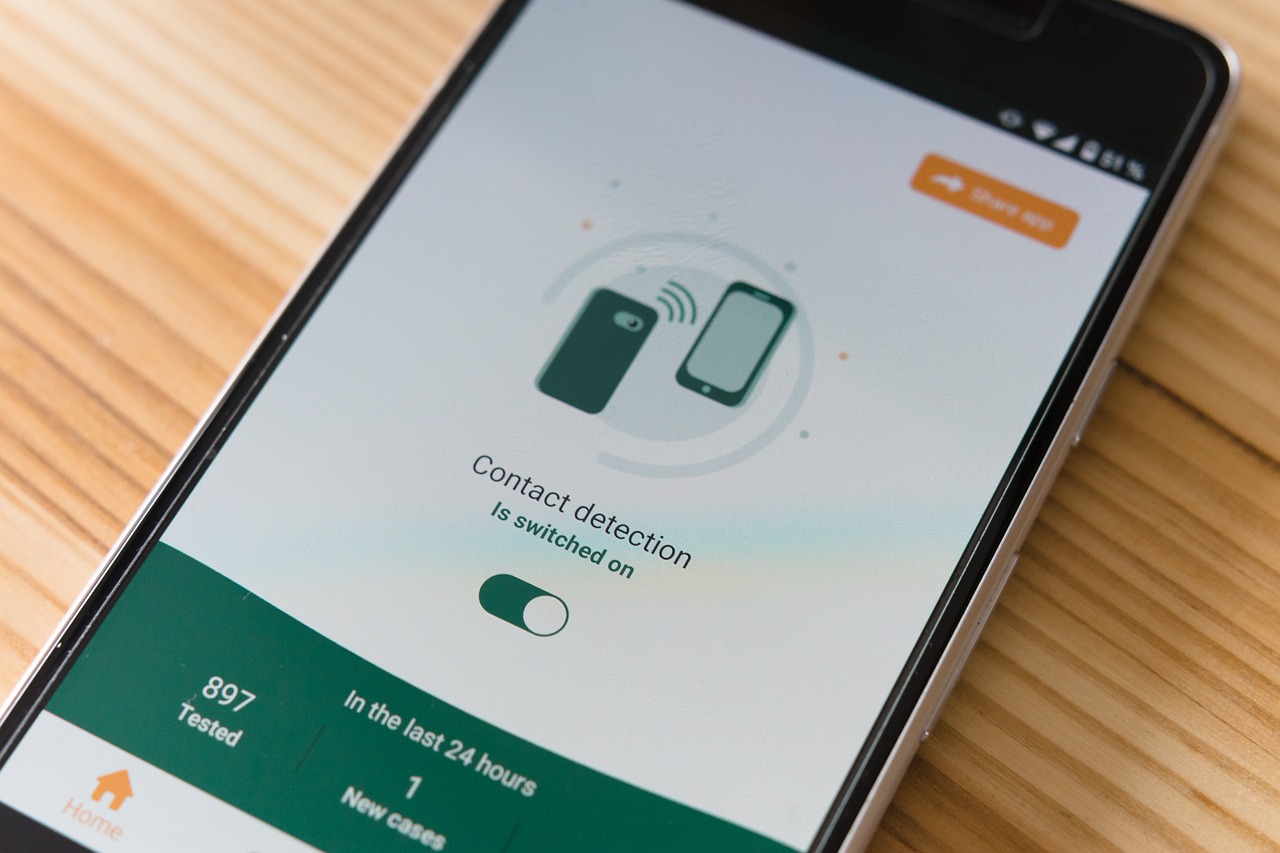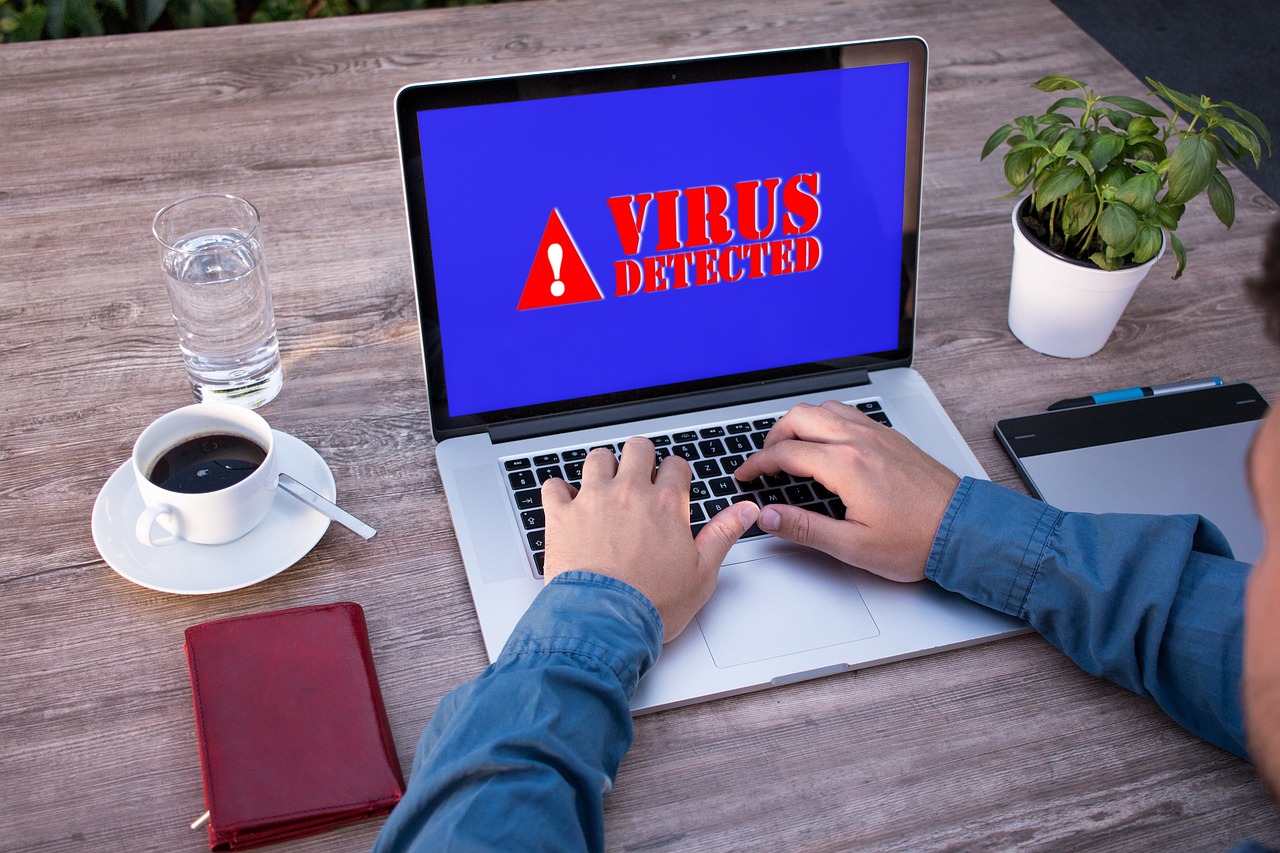The Link Between Radon and Lung Cancer - Is Your Home Safe
Radon is a silent threat lurking in many homes, and many people are unaware of its potential dangers. This colorless, odorless gas is a byproduct of uranium decay found in soil and rock, and it can seep into homes through cracks in floors, walls, and even gaps around service pipes. Imagine your home as a fortress where you feel completely safe, yet unbeknownst to you, there’s an invisible invader that could jeopardize your health. Understanding the connection between radon and lung cancer is crucial for safeguarding your living environment and ensuring the well-being of your loved ones.
Radon is not just another gas; it’s a radioactive element that can have profound implications for indoor air quality. As it naturally emanates from the ground, it can accumulate in enclosed spaces, particularly basements and lower levels of homes. When inhaled, radon decay products can damage lung tissue, leading to serious health issues over time. Think of radon as a slow-moving river—while it may seem harmless at first glance, it has the potential to erode the foundation of your health. Awareness of its properties is the first step in recognizing the risks it poses.
Prolonged exposure to radon is a significant health concern, primarily due to its strong association with lung cancer. According to the U.S. Environmental Protection Agency (EPA), radon is the second leading cause of lung cancer in the United States, right after smoking. This statistic is staggering, especially considering that many people remain oblivious to the radon levels in their homes. It’s essential to understand that the risk is not just theoretical; it’s a reality for many families. In fact, the EPA estimates that radon causes about 21,000 lung cancer deaths each year in the U.S. alone. This is a public health crisis that requires urgent attention and action.
Research consistently underscores the severity of radon exposure as a public health concern. Here are some key statistics that illustrate the gravity of the situation:
| Statistic | Details |
|---|---|
| Second Leading Cause | Radon is the second leading cause of lung cancer after smoking. |
| Lung Cancer Deaths | Approximately 21,000 lung cancer deaths annually in the U.S. are attributed to radon exposure. |
| Risk Increase | Smokers exposed to high radon levels are at a significantly higher risk—up to 66 times more likely to develop lung cancer. |
While radon poses a risk to everyone, certain groups are particularly vulnerable. Smokers, for instance, face a compounded risk when exposed to radon. The combination of smoking and radon exposure can escalate the likelihood of lung cancer dramatically. Additionally, individuals with pre-existing health conditions, such as chronic lung diseases, are also at heightened risk. Understanding these vulnerabilities is crucial for targeting prevention efforts effectively. By focusing on these at-risk populations, we can create tailored awareness campaigns that encourage testing and mitigation.
Did you know that radon levels can vary significantly based on where you live? Geographic location plays a crucial role in determining radon concentrations in homes. For instance, homes built in areas with high uranium content in the soil, such as the Rocky Mountains, are more likely to have elevated radon levels. Conversely, regions with lower uranium levels may have minimal radon exposure. This geographic variability means that homeowners should be proactive about testing their homes for radon, regardless of their location. It’s like checking the weather before heading out; you wouldn’t want to be caught in a storm unprepared!
Testing for radon is essential for ensuring a safe living environment. Homeowners can utilize various methods to measure radon levels effectively. There are two main types of radon tests: short-term tests and long-term tests. Short-term tests typically last from 2 to 90 days and provide a quick snapshot of radon levels, while long-term tests last longer, giving a more accurate representation of average radon levels in your home. Many local health departments and environmental agencies offer free or low-cost testing kits, making it easier than ever to assess your home’s safety.
If radon levels are found to be high, various mitigation techniques can reduce exposure and make your home safer. These strategies range from simple DIY solutions to professional interventions. The key is to take action as soon as you discover elevated radon levels. Ignoring the issue is akin to leaving a door wide open for danger to enter your home.
Hiring professionals for radon mitigation can ensure effective and safe reduction of radon levels. Professionals use specialized equipment and techniques to lower radon concentrations, often implementing systems that ventilate radon gas outside the home. The benefits of professional services include guaranteed results and peace of mind, knowing that the job is done right. It’s like hiring a skilled mechanic to fix your car—you want someone who knows what they’re doing to keep you safe on the road.
For those looking to tackle radon issues independently, several DIY solutions can help. Simple measures, such as sealing cracks in floors and walls, ensuring proper ventilation, and installing a radon sump pump, can significantly reduce radon levels. However, it’s essential to remember that while DIY solutions can be effective, they may not always be sufficient for high radon concentrations. Always consider consulting with a professional if levels remain elevated after your efforts. Think of it as a home improvement project—sometimes, you need a little expert help to achieve the best results.
- What is radon? Radon is a colorless, odorless gas that occurs naturally from the decay of uranium in soil and rock.
- How can I test for radon in my home? You can use short-term or long-term radon testing kits available from local health departments or online.
- What are the health risks of radon exposure? Prolonged exposure to radon is a significant health risk, primarily leading to lung cancer.
- How can I reduce radon levels in my home? You can seal cracks, ensure proper ventilation, or hire professional radon mitigation services.

Understanding Radon
This article explores the connection between radon exposure and lung cancer, highlighting the importance of testing for radon in homes and providing insights on how to ensure a safe living environment.
Radon is a colorless, odorless gas that occurs naturally from the decay of uranium found in soil and rock. Imagine it as a silent intruder in your home; you can't see it, you can't smell it, but it's there, lurking in the background. Understanding its properties is crucial to recognizing the risks it poses to indoor air quality. Radon is produced from the breakdown of uranium, which is present in varying amounts in different types of soil and rock. When uranium decays, it releases radon gas, which can seep into homes through cracks in floors, walls, and foundations, as well as through construction joints and gaps around service pipes.
One of the most alarming aspects of radon is how it can accumulate in poorly ventilated spaces, such as basements and crawl spaces. The higher the concentration of radon in a home, the greater the risk of exposure for its occupants. This gas can be especially hazardous in areas where homes are built on uranium-rich soil. To put it in perspective, radon levels can vary significantly from one house to another, even if they are located right next to each other. This variability is due to factors like the geological makeup of the area and the construction methods used in the home.
To effectively combat radon, it’s essential to understand how it behaves. Here are some key points to consider:
- Radon is a naturally occurring gas: It is released from the ground and can enter buildings through various entry points.
- Radon levels fluctuate: They can change based on weather conditions, ventilation, and the time of year.
- Testing is crucial: Since you cannot see or smell radon, the only way to know if your home has high levels is through testing.
In summary, radon is a dangerous gas that can significantly impact your health without you even knowing it. Being aware of its properties and how it enters your home is the first step towards ensuring a safe living environment. Understanding radon is not just about knowing its existence; it's about taking action to protect yourself and your loved ones from its harmful effects.
Prolonged exposure to radon can lead to serious health issues, primarily lung cancer. This section discusses the statistics and health implications associated with radon exposure, emphasizing the need for awareness and action.
Research indicates that radon is the second leading cause of lung cancer after smoking. This subheading delves into the statistics that highlight the severity of this public health concern.
Certain groups, such as smokers and individuals with pre-existing health conditions, are at higher risk of developing lung cancer from radon exposure. Understanding these vulnerabilities can help target prevention efforts effectively.
Radon levels can vary significantly by geographic location. This section examines how different regions have varying radon concentrations and the implications for homeowners living in high-risk areas.
Testing for radon is essential for ensuring a safe living environment. This subheading outlines the methods and tools available for homeowners to measure radon levels in their homes effectively.
If radon levels are found to be high, various mitigation techniques can reduce exposure. This section discusses effective strategies for lowering radon levels and making homes safer for occupants.
Hiring professionals for radon mitigation can ensure effective and safe reduction of radon levels. This subheading explores the benefits of professional services compared to DIY methods.
For those looking to tackle radon issues independently, several DIY solutions can help. This section provides practical tips for homeowners interested in reducing radon levels without professional assistance.
Have questions about radon? You're not alone! Here are some common queries:
- What is radon? Radon is a naturally occurring radioactive gas that can enter homes from the ground.
- How can I test for radon in my home? You can use a radon test kit, which can be purchased online or at hardware stores.
- What should I do if my radon levels are high? Consider hiring a professional for mitigation or explore DIY solutions to reduce radon levels.

Health Risks of Radon Exposure
When it comes to indoor air quality, radon exposure is a silent but deadly threat lurking in many homes. This colorless and odorless gas, which originates from the natural decay of uranium in soil and rock, can seep into our living spaces without us even realizing it. What’s alarming is that prolonged exposure to radon is linked to serious health issues, with lung cancer being the most significant risk. In fact, the World Health Organization has estimated that radon is responsible for around 3-14% of lung cancer cases, depending on the region. This statistic alone should raise eyebrows and prompt homeowners to take action.
Imagine being in a cozy living room, enjoying a movie night with your family, completely unaware that the air you’re breathing might be tainted with radon. It’s terrifying to think that something so invisible could have such dire consequences. The risk is particularly pronounced for those who smoke, as the combination of smoking and radon exposure dramatically increases the likelihood of developing lung cancer. In fact, smokers are 10 times more likely to get lung cancer if they are also exposed to high levels of radon. This stark reality underscores the importance of awareness and proactive measures.
Statistics reveal that radon is the second leading cause of lung cancer after smoking. To put this into perspective, consider the following table that outlines the estimated annual lung cancer deaths attributed to radon exposure in the United States:
| Year | Estimated Lung Cancer Deaths |
|---|---|
| 2019 | 21,000 |
| 2020 | 20,500 |
| 2021 | 21,500 |
These numbers are not just statistics; they represent real lives affected by a preventable risk. Understanding the health implications of radon exposure is crucial for anyone living in areas where radon levels may be elevated. Certain populations are particularly vulnerable, including:
- Smokers: As previously mentioned, the risk is significantly higher for those who smoke.
- Individuals with pre-existing health conditions: Those with compromised lung function or respiratory issues are at greater risk.
- Children: Their developing lungs make them more susceptible to the harmful effects of radon.
By recognizing these vulnerable groups, we can better target prevention efforts and ensure that everyone is informed about the risks associated with radon exposure. Furthermore, it's essential to consider that radon levels can vary widely based on geographic location. Some regions are naturally more prone to higher radon concentrations due to geological factors. Homeowners in these areas should be particularly vigilant about testing their homes for radon.
In conclusion, the health risks associated with radon exposure are serious and warrant attention. By understanding the statistics and recognizing vulnerable populations, we can take informed steps to protect ourselves and our loved ones from this invisible threat. Testing your home for radon is a critical first step in ensuring a safe living environment.
What is radon?
Radon is a naturally occurring gas that results from the decay of uranium in soil and rock. It’s colorless and odorless, making it hard to detect without proper testing.
How can I test my home for radon?
You can purchase a radon test kit from a hardware store or hire a professional to conduct the test for you. It’s a simple process that can save lives.
What should I do if my home has high radon levels?
If radon levels are found to be high, consider implementing mitigation techniques, which can involve sealing cracks in floors and walls, improving ventilation, or hiring professional radon mitigation services.

Radon and Lung Cancer Statistics
When it comes to understanding the dangers of radon, the statistics speak volumes. In fact, radon is recognized as the second leading cause of lung cancer in the United States, following smoking. This is a staggering fact that many people are unaware of. According to the Environmental Protection Agency (EPA), radon exposure is responsible for approximately 21,000 lung cancer deaths each year. To put this into perspective, that's about one in every fifteen homes in the U.S. that has elevated radon levels, making it a significant public health concern.
It's essential to grasp the gravity of these numbers. For instance, a recent study revealed that about 7% of all lung cancer cases can be attributed to radon exposure alone. This means that if you're living in a radon-prone area, your risk of developing lung cancer could be higher than you think. The risk increases dramatically for smokers; when combined with radon exposure, the chances of developing lung cancer are significantly heightened. In fact, smokers who are exposed to high levels of radon are up to 10 times more likely to develop lung cancer compared to non-smokers.
To further illustrate the impact of radon, consider the following table that summarizes the risk factors associated with radon exposure:
| Risk Factor | Increased Risk of Lung Cancer |
|---|---|
| Non-smokers | 1 in 15 |
| Smokers | Up to 10 times higher |
| Individuals with lung disease | Higher risk than general population |
As you can see, the statistics surrounding radon exposure and lung cancer are alarming. What makes it even more concerning is the fact that radon levels can vary significantly depending on where you live. Some regions are naturally more prone to high radon levels due to geological factors, which means that homeowners in these areas must be especially vigilant. The EPA has categorized counties across the U.S. into zones based on their radon potential, with Zone 1 indicating the highest risk. If you live in a Zone 1 area, your home is more likely to have elevated radon levels, making it crucial to test your indoor air quality.
In summary, the connection between radon and lung cancer is not just a statistic; it’s a call to action. Understanding these risks can empower individuals to take proactive steps to ensure their homes are safe. Testing for radon is a simple yet vital measure that can save lives. Don't wait for the statistics to hit close to home; take action today!
- What is radon? Radon is a colorless, odorless gas that occurs naturally from the decay of uranium in soil and rock.
- How can I test for radon in my home? You can purchase a radon testing kit or hire a professional to conduct the test for you.
- What should I do if my home has high radon levels? Consider hiring a professional radon mitigation service to reduce levels in your home.
- Is radon exposure only a concern for smokers? No, while smokers are at a higher risk, non-smokers are also at risk of lung cancer from radon exposure.

Vulnerable Populations
When it comes to the risks associated with radon exposure, not everyone is equally affected. Certain groups of people find themselves in a more precarious position, making them particularly vulnerable to the dangers of this invisible gas. For instance, individuals who smoke are at a significantly higher risk of developing lung cancer when exposed to radon. In fact, studies suggest that the combination of smoking and radon exposure can dramatically increase the likelihood of lung cancer compared to either factor alone. This is a crucial point to consider because it highlights the importance of addressing radon levels, particularly in homes where smokers reside.
Moreover, individuals with pre-existing health conditions, such as respiratory diseases or compromised immune systems, are also at increased risk. Their bodies may not be able to cope effectively with the additional stress that radon exposure places on their health. This makes it essential for those in these vulnerable categories to be proactive about testing their homes for radon. The consequences of neglecting this issue can be dire, and awareness is the first step toward prevention.
Additionally, the elderly are another demographic that should be prioritized. As we age, our bodies become less resilient, and the cumulative effects of environmental toxins like radon can take a toll on lung health. This is especially pertinent for older adults who may have been exposed to radon over many years without even realizing it. Recognizing these vulnerable populations is crucial for targeting prevention efforts effectively. By focusing on those most at risk, we can create a safer living environment for everyone.
To further illustrate the impact of radon on these groups, consider the following table that summarizes the increased risks associated with radon exposure:
| Population Group | Increased Risk Factor |
|---|---|
| Smokers | 10x higher risk of lung cancer |
| Individuals with Respiratory Conditions | Higher susceptibility to lung damage |
| The Elderly | Increased vulnerability due to aging |
In conclusion, understanding the vulnerable populations affected by radon exposure is vital for implementing effective testing and mitigation strategies. Whether it’s smokers, those with health issues, or the elderly, recognizing these groups can lead to better public health initiatives and ultimately save lives. So, if you or someone you know falls into one of these categories, it’s crucial to take action and ensure that your living environment is safe from radon.
- What is radon? Radon is a colorless, odorless gas that occurs naturally from the decay of uranium in soil and rock.
- How can I test my home for radon? You can use DIY radon test kits available at hardware stores or hire a professional service.
- What should I do if my home has high radon levels? Consider mitigation techniques such as installing a radon reduction system, and consult professionals for assistance.
- Who is most at risk for radon exposure? Smokers, individuals with pre-existing health conditions, and the elderly are particularly vulnerable to the effects of radon.

Geographic Variability
When it comes to radon levels, geography plays a significant role in determining how much of this dangerous gas might be lurking in your home. Just like how different regions can have varying climates, the concentration of radon can fluctuate based on local geology, soil composition, and even weather patterns. For instance, areas with high levels of uranium in the soil are more likely to have elevated radon concentrations. This means that if you live in a region known for its rocky terrain or where uranium mining has occurred, you might be at a higher risk.
To illustrate this point further, consider the following table that summarizes average radon levels in different regions across the United States:
| Region | Average Radon Level (pCi/L) | Risk Level |
|---|---|---|
| Northeast | 4.0 | High |
| Midwest | 3.5 | Moderate |
| South | 1.5 | Low |
| West | 2.0 | Moderate |
This table highlights that residents in the Northeast are particularly vulnerable, with an average radon level that significantly exceeds the EPA's action level of 4.0 pCi/L. On the flip side, those in the South generally experience lower radon levels, which might provide some peace of mind. However, it's essential to remember that even in lower-risk areas, radon can still pose a threat, especially in homes that are poorly ventilated or built on specific types of soil.
Moreover, the of radon levels can also be influenced by factors such as elevation and the presence of natural gas. For example, homes located in mountainous regions may have higher radon levels due to the geological formations that are prevalent there. Therefore, understanding the specific risks associated with your location is crucial. It’s not just about knowing that radon exists; it’s about knowing how prevalent it is in your area and taking the necessary steps to protect yourself and your family.
In conclusion, being aware of the geographic variability of radon is a vital step in ensuring a safe living environment. Testing your home for radon, regardless of where you live, can provide invaluable information that may help prevent serious health issues down the line. Remember, knowledge is power, and when it comes to radon, being informed can save lives.
- What is radon? Radon is a colorless, odorless gas that originates from the natural decay of uranium found in soil and rock.
- How can I test my home for radon? You can purchase a radon test kit from a hardware store or hire a professional to conduct the test.
- What should I do if my home has high radon levels? If radon levels are above the EPA action level of 4.0 pCi/L, consider implementing mitigation strategies or hiring a professional service.
- Are certain homes more at risk for radon exposure? Yes, homes built on certain types of soil or in areas with high uranium levels are at greater risk.
- Can radon levels change over time? Yes, radon levels can fluctuate due to changes in weather, ventilation, and other environmental factors.

Testing for Radon in Your Home
When it comes to ensuring a safe living environment, testing for radon is not just a precaution; it's a necessity. Radon, being a colorless and odorless gas, can lurk undetected in your home, posing serious health risks. The first step in combating this invisible threat is to measure its levels accurately. So, how do you go about testing for radon? There are several methods available, each with its own advantages and considerations.
One of the most common methods is using a radon test kit, which can be purchased online or at local hardware stores. These kits are typically user-friendly, allowing homeowners to conduct the test themselves. They usually involve placing a small device in your home for a specified period—often a few days to a week—and then sending it off to a laboratory for analysis. It's important to follow the instructions carefully to ensure accurate results. Additionally, there are two main types of radon test kits:
- Short-term tests: These are designed to measure radon levels over a period of 2 to 90 days. They provide quick results, making them ideal for initial assessments.
- Long-term tests: These kits measure radon levels for more than 90 days, offering a more comprehensive understanding of your home's radon exposure over time.
If you prefer a more hands-off approach, you might consider hiring a professional radon testing service. These experts use advanced equipment and methodologies to conduct thorough assessments of radon levels in your home. They can provide detailed reports and help you understand the implications of the results. Moreover, they can identify potential sources of radon entry and suggest effective mitigation strategies.
After testing, if radon levels are found to be at or above the EPA's action level of 4 picocuries per liter (pCi/L), it’s crucial to take action. But don't worry; testing isn't just about identifying a problem; it's also about empowering you to take steps toward a healthier home. Remember, radon levels can fluctuate based on various factors, including weather conditions and home ventilation, so regular testing is recommended, especially if you live in a high-risk area.
In summary, testing for radon is a straightforward yet vital process that can significantly impact your health and well-being. Whether you opt for a DIY test kit or hire a professional, the key is to stay informed and proactive. After all, knowledge is power, and when it comes to radon, it could be a matter of life and breath.
1. How often should I test my home for radon?
It is recommended to test your home for radon every two years, especially if you live in an area known for high radon levels.
2. Can radon levels change over time?
Yes, radon levels can fluctuate due to various factors such as weather, home ventilation, and changes in the structure of your home.
3. What should I do if my radon levels are high?
If your radon levels are at or above 4 pCi/L, you should consider installing a radon mitigation system and retesting your home after the installation.
4. Are there any health risks associated with radon exposure?
Yes, prolonged exposure to radon is linked to an increased risk of lung cancer, making it essential to monitor and manage radon levels in your home.

Mitigation Techniques
When it comes to ensuring that your home is a safe haven free from the dangers of radon, understanding is essential. If tests reveal elevated radon levels in your home, don't panic! There are several effective strategies available to help reduce radon concentrations and protect your loved ones. Think of radon mitigation as a shield, fortifying your home against this invisible threat. The goal is to lower radon levels to below the EPA-recommended action level of 4 pCi/L (picocuries per liter).
One of the most effective methods for radon mitigation is the installation of a radon mitigation system. These systems work by drawing radon from beneath the building and venting it outside, where it can dissipate harmlessly into the atmosphere. The most common type is a sub-slab depressurization system, which involves placing a fan in a pipe that runs from beneath the foundation to above the roofline. This method is highly effective and can reduce radon levels significantly, often by 99% or more.
For homeowners who are looking for more cost-effective solutions or prefer to take matters into their own hands, there are also several DIY mitigation solutions available. While these methods may not be as comprehensive as professional systems, they can still make a difference. For instance, ensuring proper ventilation in your home can help reduce radon levels. Opening windows and using fans to circulate air can dilute radon concentrations, especially during high radon season, which typically occurs in the winter months when homes are sealed tight.
In addition to ventilation, sealing cracks and openings in your home’s foundation can also help minimize radon entry. Simple caulking or sealing can go a long way in reducing radon levels. However, it's important to note that while these DIY methods can help, they should not replace a professional mitigation system if radon levels are significantly high.
For those considering professional help, hiring a qualified radon mitigation contractor is a wise decision. These experts have the knowledge and tools to assess your specific situation and implement the most effective solutions. They can also provide ongoing monitoring to ensure that radon levels remain low over time. Remember, investing in professional services can ultimately save you from health risks and potential costs associated with long-term exposure.
Here’s a quick comparison of professional vs. DIY mitigation techniques:
| Aspect | Professional Mitigation | DIY Mitigation |
|---|---|---|
| Effectiveness | High, often reduces levels by 99% | Variable, may lower levels but less comprehensive |
| Cost | Higher initial investment | Lower, but may require ongoing effort |
| Expertise | Performed by trained professionals | Requires homeowner knowledge and effort |
| Long-term Monitoring | Often includes follow-up checks | Homeowner responsibility |
Ultimately, the choice between professional and DIY mitigation depends on your specific circumstances, including your budget, the radon levels detected, and your comfort level with home improvement projects. Whether you decide to go the professional route or take on some DIY tasks, the important thing is to take action. Remember, radon is a silent enemy, but with the right mitigation techniques, you can reclaim your home and ensure a safer environment for you and your family.
1. How do I know if my home has high radon levels?
The only way to know is to test for radon. Home testing kits are available online or at home improvement stores. You can also hire a professional to conduct the test.
2. Can I reduce radon levels on my own?
Yes, there are DIY solutions like improving ventilation and sealing cracks, but for significant radon levels, a professional mitigation system is recommended.
3. How often should I test for radon?
It's advisable to test your home every two years or after any major renovations. If you live in a high-risk area, more frequent testing may be necessary.
4. Is radon exposure dangerous?
Yes, prolonged exposure to radon is the second leading cause of lung cancer in the U.S. It's crucial to take steps to reduce exposure if levels are high.
5. What should I do if my radon levels are high?
If your home tests above the EPA action level, consider installing a radon mitigation system or consulting with a professional for effective solutions.

Professional Radon Mitigation Services
When it comes to ensuring your home is a safe haven, play a pivotal role. These experts are equipped with the knowledge and tools necessary to identify and reduce radon levels effectively. You might be wondering, “Why should I hire someone when I can just do it myself?” Well, the truth is, radon mitigation isn’t just about sealing cracks and installing fans; it requires a comprehensive understanding of how radon behaves in your home’s environment. Professionals can conduct a thorough assessment, ensuring that all potential entry points are addressed, which is something that DIY methods might overlook.
One of the most significant advantages of hiring a professional is the peace of mind that comes with their expertise. They can provide a detailed analysis of your home’s radon levels and recommend the best mitigation strategies tailored to your specific situation. For instance, they might install a sub-slab depressurization system, which involves placing a fan and piping system under your home’s foundation to draw radon gas out before it can enter your living space. This method is often more effective than simple sealing techniques.
Moreover, professional services often come with warranties and follow-up testing, ensuring that the mitigation system continues to function correctly over time. This is crucial because radon levels can fluctuate; what might be safe today could change in a few months. By having a professional handle the installation and maintenance of your radon mitigation system, you’re not just investing in a solution; you’re investing in your family's health and safety.
However, if you’re still on the fence about hiring a professional, consider the potential costs of ignoring radon exposure. The financial burden of treating lung cancer can far exceed the cost of mitigation services. According to the EPA, radon is responsible for thousands of lung cancer deaths each year. Therefore, taking proactive measures by hiring experts can save you from devastating health consequences and financial strain down the line.
In conclusion, while DIY solutions may seem appealing, the complexities involved in effective radon mitigation make professional services a worthwhile investment. They not only provide a comprehensive approach to reducing radon levels but also ensure that your home remains a safe environment for you and your loved ones.
- What is radon? Radon is a colorless, odorless gas that is produced by the natural decay of uranium in soil, rock, and water.
- How can I tell if my home has high radon levels? The only way to know is to test your home for radon. You can purchase a radon test kit or hire a professional to conduct the test.
- How much does professional radon mitigation cost? The cost can vary widely depending on the size of your home and the mitigation method used, but it generally ranges from $800 to $2,500.
- Are there any DIY methods for radon mitigation? Yes, there are some DIY methods, such as sealing cracks in floors and walls, but they may not be as effective as professional solutions.
- How often should I test my home for radon? It is recommended to test your home every two years, or after any significant renovations.

DIY Mitigation Solutions
When it comes to tackling the issue of high radon levels in your home, you might feel overwhelmed. But fear not! There are do-it-yourself (DIY) solutions that can help you mitigate radon exposure effectively without breaking the bank. The key is to understand the sources of radon entry and how to seal them off. Think of your home as a ship; if there are leaks, it won’t stay afloat for long. By addressing these leaks, you can keep your living environment safe and sound.
One of the first steps in DIY radon mitigation is to identify the areas where radon is most likely to enter your home. This typically includes basements and crawl spaces, where the gas can seep in through cracks in the foundation, gaps around pipes, or even through the soil itself. To seal these entry points, you can use caulk or sealant. Make sure to apply these materials generously, creating a tight seal that prevents radon from infiltrating your space. It’s like putting a lid on a pot; if the lid is secure, nothing escapes!
Another effective DIY method is to improve your home’s ventilation. By increasing air circulation, you can reduce the concentration of radon indoors. This can be achieved by opening windows, using fans, or installing a ventilation system. Imagine your home as a balloon; if you keep blowing air into it without letting any out, it will eventually pop! Proper ventilation allows fresh air to replace the stale, radon-laden air, keeping your environment healthier.
If you want to take your DIY efforts a step further, consider sub-slab depressurization. This technique involves creating a vacuum beneath your home’s foundation to draw radon gas away from the living space. To do this, you’ll need to install a fan and a pipe that extends from below the slab to the outside. While this may sound complex, many homeowners have successfully implemented this method with some research and determination. Just remember, safety first; if you’re unsure about any steps, consult a professional.
To summarize, here are some DIY solutions you can implement:
- Seal cracks and openings in your foundation with caulk or sealant.
- Improve ventilation by opening windows and using fans.
- Consider sub-slab depressurization for a more advanced solution.
While these DIY methods can significantly reduce radon levels, it’s essential to continue testing your home regularly. After all, just like maintaining a car, regular check-ups can prevent bigger issues down the road. And if your radon levels remain high despite your best efforts, it may be time to call in the professionals. They have the expertise and tools necessary to tackle the problem effectively. Remember, when it comes to your health, it’s always better to err on the side of caution!
Q: How often should I test for radon in my home?
A: It's recommended to test your home for radon every two years, or sooner if you make significant changes to your home or its structure.
Q: Can I completely eliminate radon from my home?
A: While you may not be able to eliminate radon entirely, you can significantly reduce its levels through proper mitigation techniques.
Q: Are there any specific tools I need for DIY radon mitigation?
A: Basic tools such as caulk, sealant, fans for ventilation, and possibly a radon mitigation system can be helpful for DIY efforts.
Frequently Asked Questions
- What is radon and where does it come from?
Radon is a colorless, odorless gas that forms naturally from the decay of uranium found in soil and rock. It can seep into homes through cracks in floors, walls, and other openings, making it a potential health risk for indoor air quality.
- How does radon exposure lead to lung cancer?
Prolonged exposure to radon can damage lung tissue and lead to lung cancer. It is the second leading cause of lung cancer after smoking, with studies showing that even low levels of radon can pose a significant risk over time.
- How can I test for radon in my home?
You can test for radon using a simple home testing kit that you can purchase online or at a hardware store. These kits are easy to use and typically involve placing a detector in your home for a specified period before sending it to a lab for analysis.
- What are the recommended radon levels?
The Environmental Protection Agency (EPA) recommends taking action to reduce radon levels if they are 4 picocuries per liter (pCi/L) or higher. It's important to test your home regularly, especially in areas known for high radon levels.
- What should I do if my home has high radon levels?
If your home tests high for radon, consider hiring a professional radon mitigation service. They can install systems that effectively reduce radon levels, such as venting systems or sealing cracks in your home.
- Are there DIY methods for reducing radon levels?
Yes, there are several DIY methods you can try, such as sealing cracks in floors and walls, improving ventilation, and using fans to help circulate air. However, professional services are often more effective for significant radon problems.
- Who is most at risk from radon exposure?
Certain populations, such as smokers and individuals with pre-existing lung conditions, are at a higher risk of developing lung cancer from radon exposure. Understanding these vulnerabilities can help prioritize testing and mitigation efforts.
- Does radon levels vary by location?
Absolutely! Radon levels can vary significantly based on geographic location. Some regions have higher natural concentrations of radon due to the underlying geology, so it's crucial to be aware of local radon maps and statistics.



















